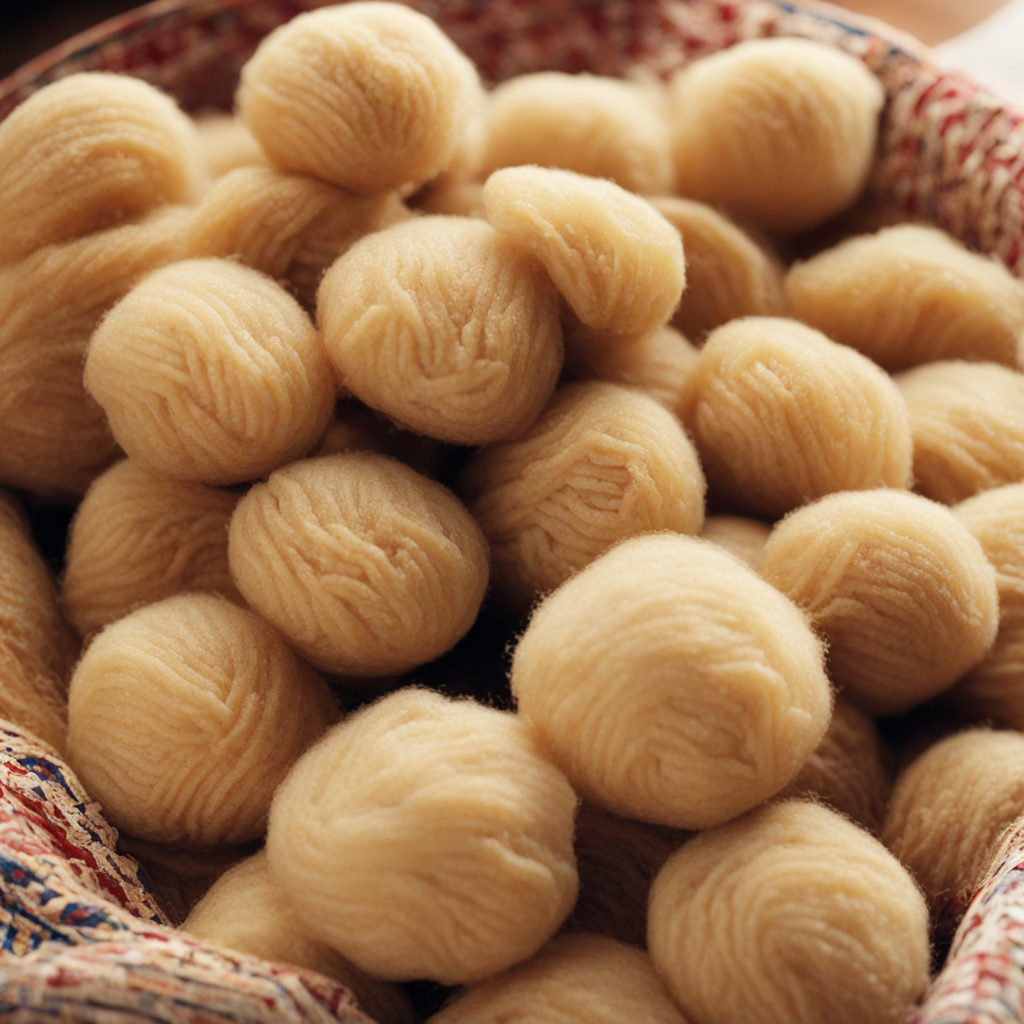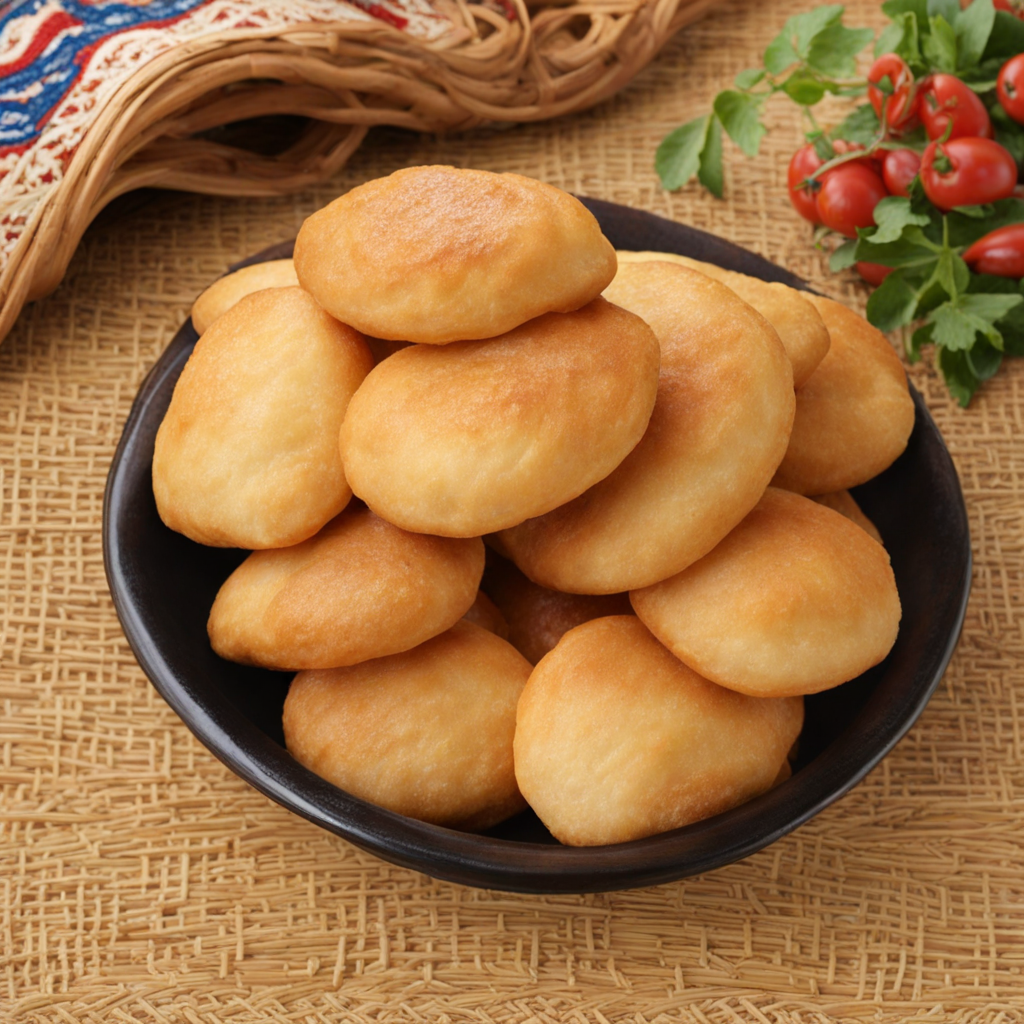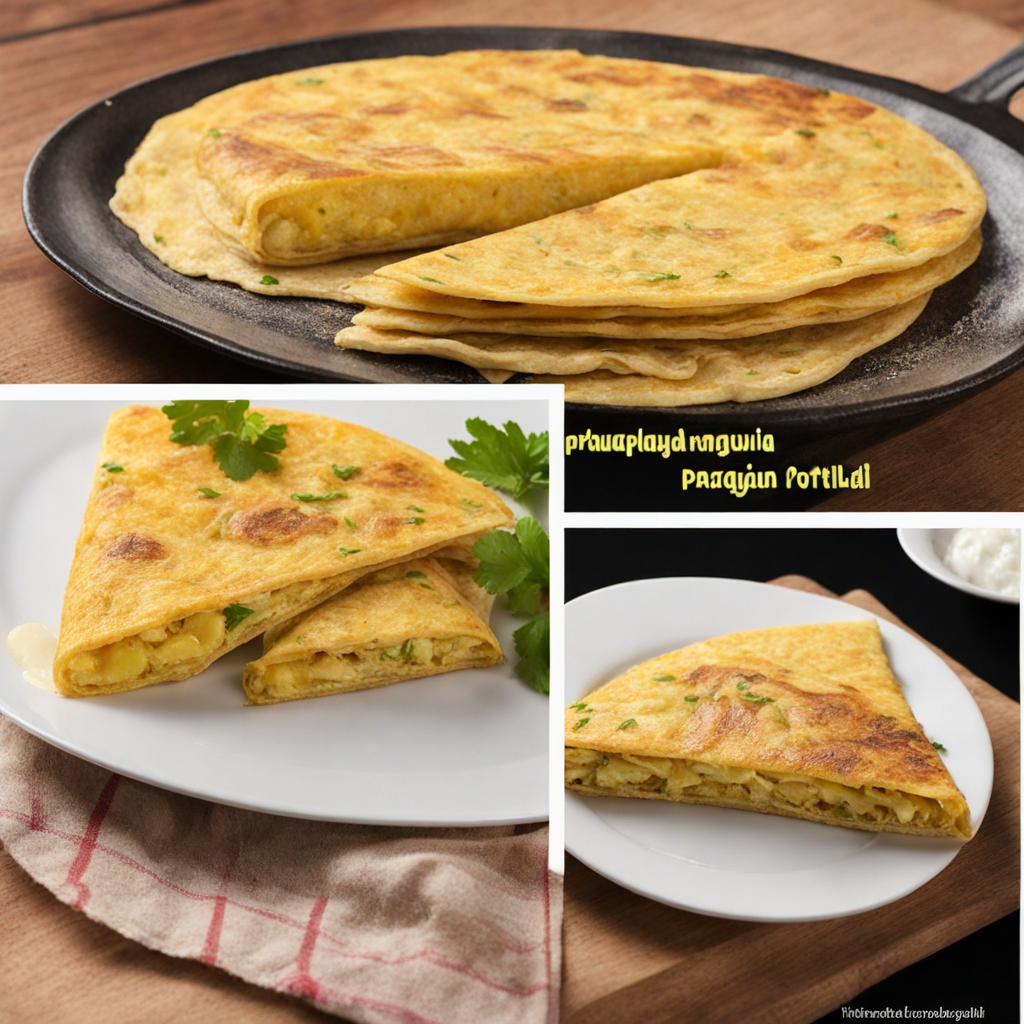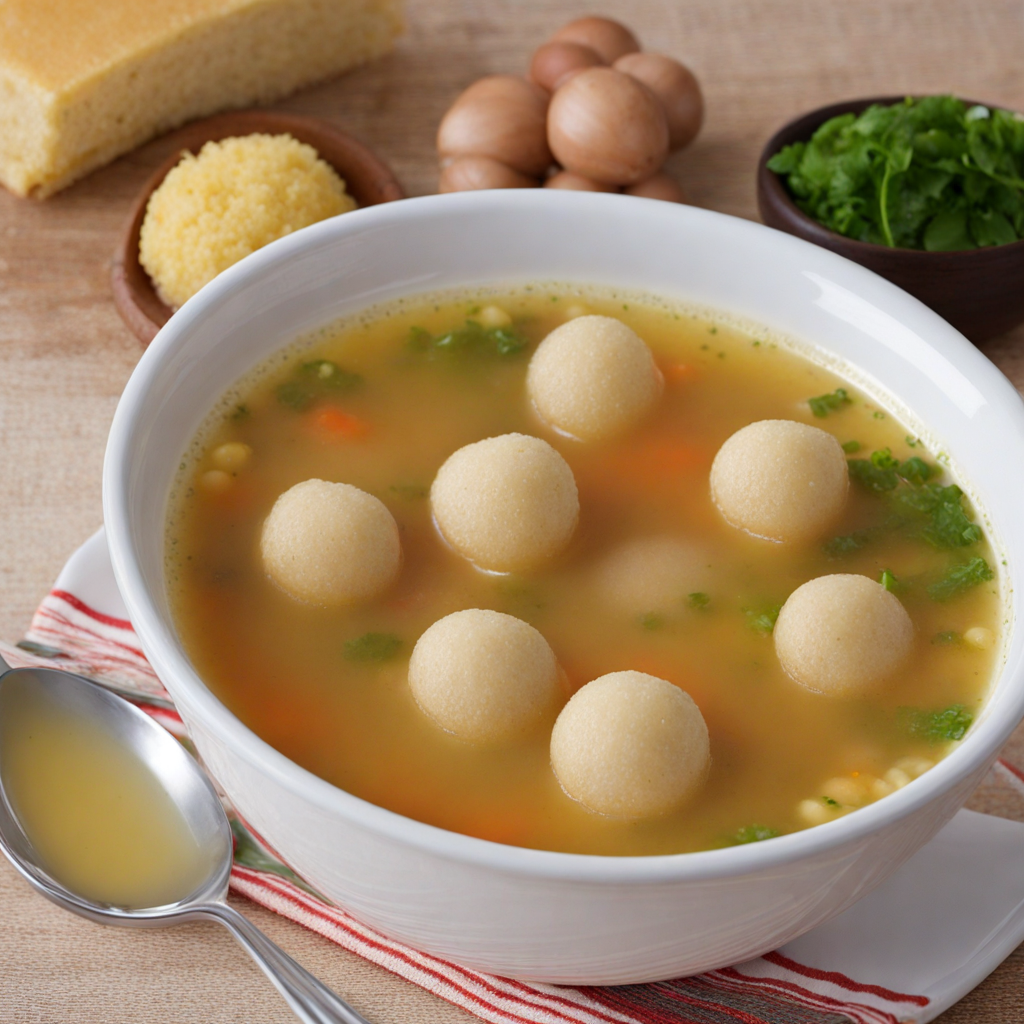Chipa Wulha
Chipa Wulha is a delightful Paraguayan dish that embodies the rich culinary traditions of the region. This savory snack is a type of cheese bread that stands out due to its unique blend of ingredients, primarily featuring manioc flour, which gives it a distinctive texture. The dough is typically mixed with fresh cheese, often a local variety known as "queso paraguayo," which melts beautifully and adds a creamy richness to every bite. The addition of eggs and milk helps to create a soft, pliable dough, making it easy to shape into small, round patties or loaves that can be baked to perfection. What sets Chipa Wulha apart from other cheese breads is its subtly smoky flavor, often achieved by baking it in a traditional clay oven. This method imparts a warmth and depth that enhances the overall experience of savoring the bread. The exterior becomes slightly crispy while the inside remains fluffy and moist, creating a delightful contrast in textures. The aroma wafting from the oven is intoxicating, making it nearly impossible to resist indulging in this cheesy treat fresh out of the oven. Chipa Wulha is not just a snack; it's a cultural experience. Often enjoyed during celebrations, family gatherings, or as a comfort food, this bread carries with it a sense of community and tradition. Pair it with a hot beverage or enjoy it alongside a bowl of spicy soup, and you'll find that the flavors harmonize beautifully, showcasing the versatility of this beloved Paraguayan dish. Whether you're a seasoned foodie or a curious newcomer, Chipa Wulha promises a taste adventure that you won't forget.
How It Became This Dish
Chipa Wulha: A Culinary Journey from Paraguay #### Origins and Historical Context Chipa Wulha, a traditional Paraguayan dish, is a delightful representation of the country's culinary heritage, deeply rooted in its indigenous and colonial history. The term “chipa” is derived from the Guarani word for “bread,” and it encompasses a variety of baked goods made primarily from cassava flour and cheese. The origins of Chipa Wulha can be traced back to the Guarani people, who have inhabited the region long before European colonization. The Guarani cultivated cassava, or manioc, which became a staple ingredient in their diet. When the Spanish arrived in the 16th century, they introduced new ingredients such as cheese, eggs, and milk, which were incorporated into traditional recipes. Chipa Wulha, characterized by its unique combination of these indigenous and colonial influences, evolved as a comforting, nourishing food that reflects the cultural fusion present in Paraguay. #### Ingredients and Preparation Chipa Wulha is primarily made from three main ingredients: cassava flour, cheese (often a local variety such as Paraguayan cheese), and eggs. The dish is typically seasoned with salt, and some variations may include milk or butter for added richness. The preparation process is relatively straightforward. The cassava flour is combined with grated cheese, beaten eggs, and salt, forming a dough that is then shaped into small buns or patties. The dough is often shaped into a distinctive oval or rounded form before being baked or cooked in a clay oven, which imparts a unique flavor and texture. The simplicity of the ingredients belies the depth of flavor found in Chipa Wulha. The use of cassava flour gives the bread a chewy texture, while the cheese contributes a savory richness. This balance makes it a versatile food that can be enjoyed on its own or as an accompaniment to meals. #### Cultural Significance Chipa Wulha holds a special place in Paraguayan culture, often associated with communal gatherings, celebrations, and everyday life. While it can be enjoyed at any time, it is particularly popular during festivals and religious celebrations, such as Holy Week and Christmas. Additionally, it is commonly served during the traditional Paraguayan tea time, known as “merienda,” where it is paired with tereré, a refreshing herbal infusion served cold. The dish also symbolizes the blend of cultures that have shaped Paraguay. The Guarani influence is evident in the use of cassava, while the Spanish colonial legacy is reflected in the incorporation of cheese and eggs. This melding of traditions is a source of pride for Paraguayans, as it illustrates their resilience and adaptability throughout history. Chipa Wulha has also become a symbol of national identity. As a cherished traditional food, it represents Paraguay’s agricultural roots and the importance of local ingredients. It is not uncommon to find families preparing Chipa Wulha together, passing down recipes and techniques from one generation to the next. This practice fosters a sense of community and continuity, ensuring that the dish remains an integral part of Paraguay’s culinary landscape. #### Evolution Over Time While the core recipe of Chipa Wulha has remained largely consistent, the dish has evolved over time to reflect contemporary tastes and preferences. In recent years, chefs and home cooks have experimented with various ingredients and techniques, introducing new flavors and textures. For example, some modern adaptations incorporate different types of cheese, herbs, or spices, giving the traditional dish a contemporary twist. The globalization of cuisine has also played a role in the evolution of Chipa Wulha. As Paraguayans migrate and share their culinary heritage with the world, the dish has gained popularity beyond its borders. In urban areas and among the diaspora, Chipa Wulha is often featured in restaurants and food festivals, showcasing its versatility and appeal to a broader audience. This exposure has led to a growing appreciation for Paraguayan cuisine, with Chipa Wulha serving as a culinary ambassador of sorts. However, with modernization comes the challenge of preserving traditional practices. As younger generations become more influenced by global food trends, there is a risk that the traditional methods of preparing Chipa Wulha may be lost. To combat this, various organizations and culinary schools in Paraguay are actively promoting the importance of preserving traditional recipes and cooking techniques. Workshops, cooking classes, and local festivals aim to educate the younger population about their culinary heritage, ensuring that dishes like Chipa Wulha continue to be made with love and respect for their origins. #### Conclusion Chipa Wulha is more than just a dish; it is a reflection of Paraguay’s rich history and cultural identity. Its origins in the indigenous Guarani culture, combined with the influences of Spanish colonialism, have culminated in a beloved food that resonates with the Paraguayan people. As it continues to evolve and adapt to modern tastes, Chipa Wulha remains a symbol of community, tradition, and national pride. In a rapidly changing world, the preservation and celebration of traditional foods like Chipa Wulha are vital for maintaining cultural identity. This dish not only nourishes the body but also serves as a bridge connecting generations and reminding Paraguayans of their roots. Whether enjoyed at a festive gathering, a family meal, or even a simple snack, Chipa Wulha encapsulates the spirit of Paraguay—its history, its people, and its enduring love for food.
You may like
Discover local flavors from Paraguay







